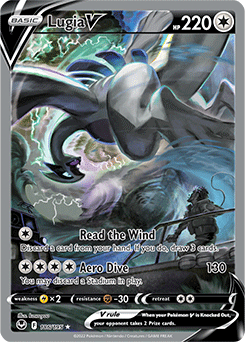What the Fukuoka?! – Champions League Review
Hello everyone! As we draw closer to the end of the Paradox Rift format and accompanying Standard format rotation, I’ve decided it’s time to start looking at the next format.
There are still two Regionals in the current format – Goiania and Vancouver, and I am still figuring out what to play for Vancouver. That said, I’ve been testing the post-rotation Standard format quite a bit, and I have already discussed everything I have to share about the current format. For the majority of players who are not attending Goiania or Vancouver, hopefully this article will be helpful when looking ahead to the next format.
Japan’s Champions League tournaments are always massive tournaments that give us pointers for our own metagame. Although they do play best-of-one, it’s worth taking note of any decks that are able to perform well in a field of so many players. Today I’ll be reviewing the recent Fukuoka Champions League tournament, which was the first major event in the post-rotation Standard format. Since I have been playing this format myself, I have some of my own opinions to share about these decks as well. I’ll be referencing the Top 16 lists that are listed here. It seems that there are a wide variety of decks that can succeed in this format. In my subsequent articles, I’ll be going more in-depth on one or two decks at a time.
1st Place Lugia VSTAR

This deck managed to win the Fukuoka Champions League, Lugia VSTAR / Archeops surviving and thriving after its second rotation. Lugia was a dominant meta force for some time, but it had taken a backseat recently after the release of Paradox Rift. Lugia no longer has the option of its Single Strike attackers after rotation, but it doesn’t need them. The new Cinccino from Temporal Forces gives the deck an extraordinarily powerful attacker. It deals 70 damage for each Special Energy card attached to it, making it the perfect partner for Archeops. In conjunction with Archeops’s Primal Turbo, Cinccino deals tons of damage very easily. The only inconvenience is that Cinccino is a Stage 1 Pokemon, which makes it a little difficult to set up in addition to all of the early game maintenance that Lugia comes with normally.
Cinccino is the very definition of a glass cannon, as it easily gets KO’d in return with its measly 110 HP. Lugia VSTAR itself is a useful attacker as well, dealing decent damage and tanking opposing hits. Lugia also likes to prey upon Pokemon V or Pokemon ex with 220 HP or less – they are very efficient sources of Prize cards.
I am a huge fan of the winning deck list’s decision to play Jacq and two copies of Collapsed Stadium. Jacq is less powerful but more versatile than the now-rotated Professor Burnet that Lugia used to play. Sure, you’d rather have Professor Burnett, but Jacq is still quite useful. Collapsed Stadium removes Lumineon V from play, which ends up being a huge difference maker in many games. The deck only plays one copy of Lumineon, but it almost always needs to use it. Furthermore, a single copy of Collapsed Stadium can be very difficult to find at the right time, hence the need for two. I would like a second copy of Lumineon in the deck, but that results in starting with it quite often. Starting with it wouldn’t even be that bad if it wasn’t for the two Prize cards it gives up later.
This concludes the public portion of this article.
If you'd like to continue reading, consider purchasing a PokeBeach premium membership! If you're not completely satisfied with your membership, you can request a full refund within 30 days.
Each week we post high-quality content from some of the game's top players. Our article program isn't a corporate operation, advertising front, or for-profit business. We set our prices so that we can pay the game's top players to write the best content for our subscribers. Each article topic is carefully selected, goes through multiple drafts, and is touched up by our editors. We take great pride in our program!

